Can we control the inflammation in our body through anti-inflammatory foods? This has been the subject of intense interest with several particularly people who suffer from joint disorders. However inflammation isn’t restricted to joint disorder alone. There is a host of diseases especially chronic diseases which are linked with inflammatory process such as Alzheimer’s disease, diabetes, heart disease, cancer, arthritis, gout, asthma, migraine, depression, Inflammatory bowel disease. There are many drugs to reduce inflammation but they have undesirable side effects and few of them even suppress our immune system. One of the most effective and powerful ways to control inflammation is by consuming more of anti-inflammatory foods and avoiding the foods that causes it. An anti-inflammatory diet encompasses fruits, vegetables, good fats, nuts and seeds. In this article I will be talking about how to reduce inflammation through anti-inflammatory foods. Let us first understand what inflammation is and what triggers it in our body?
What is inflammation?
You probably have seen this happening when your skin becomes red, hot to touch, swollen, painful and restricted movements of the inflamed part. These are the five cardinal signs of inflammation. Inflammation is a localized healing and restorative response of our body towards tissue damage which includes a series of coordinated steps such as increased blood flow to the site of damage, infiltration of white blood cells and then release of chemical mediators (biomarkers of inflammation) to initiate the repair of damaged tissue. Therefore, process of inflammation includes tissue repair and reestablishment of tissue functionality after its damage.
Current anti-inflammatory drugs/medicines control these cardinal signs of inflammation and provide immediate relief when acute inflammation sets in however these drugs cause gut injury and have side effects in long run.
Inflammation can be both our friend as well as enemy. At one hand, it is an important component of body’s immune response. While in certain conditions the damage remains unresolved and a chronic low grade state of inflammation develops which lasts as long as a person’s lifetime. These conditions are inflammatory joint disorders (Gout, Rheumatoid arthritis), inflammatory bowel diseases (Ulcerative colitis, Crohn’s disease), heart disease (atherosclerosis), cancer, migraine and psoriasis1. Now that we know what inflammation is, let us understand why inflammation occurs in our body?

What causes inflammation?
The reason why chronic inflammation sets in our body is our unhealthy lifestyle and wrong dietary choices. A larger role here is played by genetics and early life nutrition. Some of the common factors that contribute to inflammation are:
1.Lack of adequate night sleep

Research has shown that sleep loss alters mediators of inflammation. In an experimental study an increase in white blood cells (WBC or leukocytes) was seen when the study patients remained wakeful for more than 40 hours2. This indicates a sign of host defense mechanism towards injury (sleep loss in this case). Studies have also shown that one night of sleep restricted to 4 hours leads to production of pro-inflammatory mediators3.
Lack of adequate night sleep has impact on blood pressure likewise. Normally during healthy sleep, blood pressure drops to its lowest point in the whole day. In an experiment, healthy volunteers were deprived of 4 hours of night sleep for 10 consecutive days and their pressure level was found to increase4.
Adequate sleep is crucial in wiping out toxins from our body. When we don’t take ample sleep at night, the toxins begin to accumulate in body resulting in an inflammatory state.
2.Eating Pro-inflammatory foods

Certain foods do not go well in people who are prone to inflammation. These foods are best to be avoided. Milk, curd and cheese, certain starchy vegetables, refined sugars, processed foods, saturated & Trans fats are some of the examples of pro-inflammatory foods.
3.Chronic stress

Whenever we are in stress (Fight, fright or flight), certain chemicals (called catecholamines) are released that increase our blood pressure and heart rate in response to that stress. This mechanism is beneficial for recovery. However if the strain becomes prolonged referred to as chronic stress, it becomes a precursor for an array of diseases such as high blood sugar, high blood pressure, heart disease, depression and irritable bowel syndrome (a disease of gut with belly discomfort, loose motion or constipation, change in stool consistency). Another hormone called glucocorticoid is one of the major stress hormones released during stress response and has been found in researches to possess pro-inflammatory role5.
People in chronic mental, emotional or social stress tend to indulge in erratic eating habits, smoking, drinking alcohol. All this adds on to the inflammatory state.
4.Exposure to chemicals
We are surrounded by toxins in and out through the food we eat, the water we drink, the creams, hair oils and shampoos we use, medicines we take and from exposure to heavy metals through air pollution. Long term exposure to these toxins cause inflammation in our body. It is important to detoxify our bodies by following an anti-inflammatory diet, detox diet and by replacing all chemical laden personal care products with pure organic chemical and preservative free products.
How to reduce inflammation through Anti-inflammatory Foods
Imagine if the key to perfect health is as close as your kitchen cabinets! If we wisely choose the food that we eat, we can surely keep the inflammatory attacks in chronic diseases at bay and enjoy a healthy life. An anti-inflammatory diet includes foods that reduce inflammation. In past, extract of willow leaves were used to relieve the signs of inflammation because leaves of this plant contain a compound called salicin which is anti-inflammatory in nature. Anti-inflammatory drug called aspirin is derived from the same plant. Let us explore the healing foods one by one that may facilitate to reduce inflammation.
1.Omega 3 fatty acids
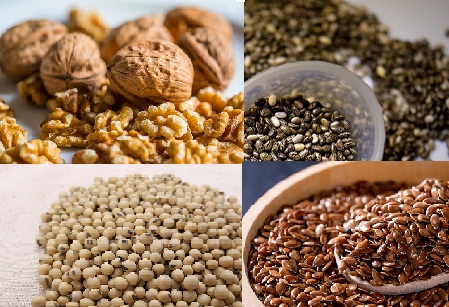
Among the fatty acids, omega 3 fatty acids have sturdy medicinal properties. Dietary intake of omega 3 fatty acids reduces both disease symptoms and intake of anti-inflammatory drugs. Vegetarian sources of omega 3 fatty acids are soybean, walnuts, flaxseeds, canola oil, hempseed, chia seed, wheat germ and green leafy vegetables. Recommended adequate intake of omega 3 fatty acids per day for vegetarians is 2.6 g for men and 1.6 g for women.
2. Ginger

Ginger is a strong anti-inflammatory food particularly helpful in chronic inflammation because ginger extract derived from common ginger- Zingiber officinale (family Zingiberaceae) inhibits the stimulation of several genes concerned with the inflammatory response. Its key ingredients like gingerol, shogoal, and paradols can protect against cancer, diabetes, heart disease, and digestive disorders.
Ginger has been used since ages in households in the curries and tea. Drinking ginger tea is a very protective practice. Tea contains flavonoids and is incredibly anti-inflammatory in nature.
Dried ginger (saunth) has additional medicinal properties compared to fresh ginger. During an acute inflammatory attack especially in diseases such as gout and rheumatoid arthrits, maximum 4 gms of dried ginger powder in a day can be taken with warm water to get relief from joint pains.
3. Turmeric

A compound called ‘curcumin’ present within the roots of the plant turmeric (Curcuma longa) is known to possess anti-inflammatory properties. It has been proved in researches that turmeric suppresses inflammation through varied mechanisms. Unfortunately curcumin when eaten alone doesn’t offer abundant health benefits because of its poor bioavailability (which means that poor absorption and speedy elimination from our body). So, what should we do? It has been seen that curcumin once combined with piperin (the major active compound in black pepper or kaali mirch), increases its bioavailability by 2000%6. How much turmeric should we take? Well, a large study has shown 1000 mg/day of curcumin taken for 8-12 weeks can cut back pain and inflammation related symptoms notably arthritis (joint pain) symptoms7.
4. Red Hot chilli pepper
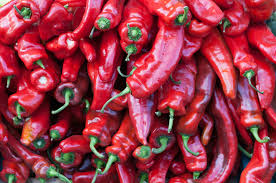
Research has shown that the active compound known as capsaicin present in red hot chilli pepper liable for its anti-oxidant, anti-inflammatory, anti-cancer and anti-diabetogenic effects. It is also used as a natural pain-killer. So, with exception of culinary there’s a medicative reason to feature red peppers in our diet. Another contributory factor in the health benefits of chilli pepper is presence of Vitamin C in it. Do you know fresh red chili pepper has more vitamin A than carrots and fresh green chilli pepper contains more vitamin C than citrus fruits 8?
5. Berries
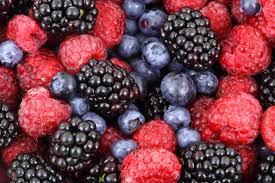
Berries (particularly cranberry and blueberry) are well known for their anti-oxidant effects but they are also beneficial in reducing signs of inflammation due to presence of a compound called Quercetin which is one of the most commonly occurring flavonoid in nature. Berries are one amongst the foremost exuberant sources of anthocyanin group of flavonoids that makes them a robust anti-inflammatory food. Examples of berries include blueberries, blackberries, strawberries, raspberries, cherries, cranberries, acai berry, black currant, mulberries and gooseberries (Amla).
6. Apple

A research study found a significant inverse relation between intake of apples and risk of diabetes9.The health boosting compound accountable for protecting against several diseases is Quercetin (a type of flavonoid) and is found in abundance in apples. Apples are found to guard against cancer, lower cholesterol, and scavenge free radicals due to strong anti-oxidant action. However the flavonoids content varies amongst different varieties of apples and is greatly affected by the maturation and ripening of the fruit. It has been seen in analysis that people who eat less amount of fruits and vegetables are twice as likely to get cancer compared to people who eat additional fruits and vegetables. Apples are found to contain second highest quantity of flavonoids (highest found in cranberry) among fruits10.
7. Broccoli
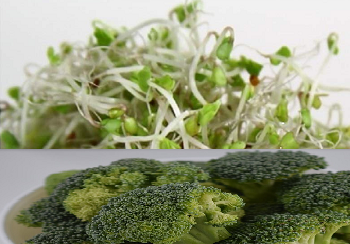
Broccoli is high in flavonoids, vitamin C and minerals. Sulforaphane, a major component of broccoli, is known to possess anti-inflammatory, anti-oxidant and anti-cancer properties. So, a diet rich in broccoli can defend against inflammatory diseases like heart disease, cancer etc. Broccoli sprouts contain 10 times additional sulforaphane than adult broccoli and so a way healthier choice than the latter. Eat them raw as broccoli sprouts tend to destroy with cooking.
8. Essential oils

Eucalyptus and rosemary essential oils contain a compound known as 1,8-cineole which has potent anti-inflammatory activity. In a research analysis, a group of asthmatic patients dependent on prednisolone (steroid) were administered 200 mg of 1,8-cineole three times a day. The results showed that daily prednisolone dosage reduced by 36% in these patients. These results suggest an anti-inflammatory activity of 1,8-cineol in asthma11.
Ginger, turmeric, thyme, clove, frankinsence, orangeessential oils also exhibit anti-inflammatory activity.
Essentials oils can be used either by massage technique (mixing a few drops in carrier oil (e.g. coconut oil) and massaging it on the painful joint) or by inhalation technique (adding a few drops in hot water and inhaling the steam). Another way of using essential oils is by diffuser technique (adding a few drops in a diffuser containing water and the aromatic mist spreads within the room).
9. Pineapple
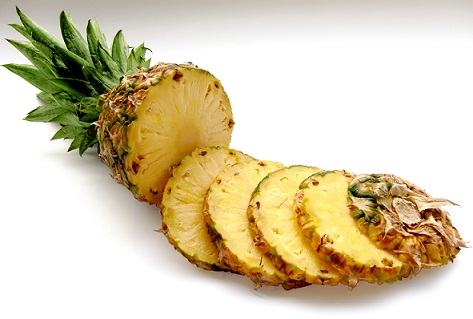
Both the stem and the fruit of pineapple plant (commonly called Ananas) contain a compound known as bromelain. Bromelain is an enzyme that is significantly absorbed by the body and does not cause any side effects. The process how bromelain acts at the site of inflammation is by increasing the serum fibrinolytic activity ( increased breakdown of blood clots or fibrin clots) and decreasing vascular permeability (decreasing abnormal fluid leakage or outpouring from blood vessels) that reduces oedema (fluid accumalation at the site of inflammation) thereby reducing swelling, pain and other signs of inflammation12. Apart from this, Pineapples are powerful anti-oxidants since they supply 16% of the daily requirement of Vitamin C. Or half cup of pineapple juice suffices 50% of daily recommended amount of vitamin C in adults.
10. Aloe vera gel
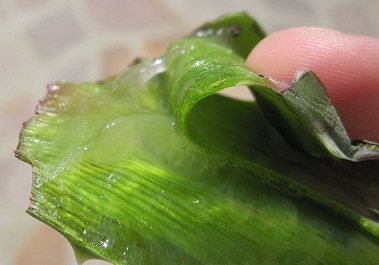
Aloe vera is known for its immense health benefits since ages. Its strong anti-inflammatory property can be attributed to presence of fatty acids in its gel such as lupeol, campesterol and sisoterol. Aloe vera gel taken both topically and orally in juice form relieves pain, reduces oedema overall inflammation. It provides relief in many ailments such as irritable bowel syndrome, stomach ulcers, Crohn’s disease, heartburn, indigestion, psoriasis, diabetes, arthritis, gout, heart disease. Another useful substance present in aloe gel is saponin. Saponins are multitalented soapy substances present in the aloe vera gel responsible for its cleansing action apart from being antimicrobial too. It helps in flushing out toxins from the body.
Anti-inflammatory diet
As we are departing from our ancient ways of eating, we are falling prey to the modern day diseases. The very first step in the direction of anti-inflammatory diet is to move towards vegetarian diet and cut down on refined sugar and processed foods. There is an extensive evidence to suggest that acute and chronic inflammation can be controlled through foods and nutrients13. In general healthy eating habits supported by low glycemix index foods and low levels of VLDLs (very low density lipoproteins) in the blood are linked with inflammation control. Let us have a look at what an ideal anti-inflammatory diet should be.
1.Identify your aggravating/triggering foods
If you are suffering from a chronic joint problem such as gout or rheumatoid arthritis, or diabetes or heart problem or any other inflammatory condition, you must have had periods of acute inflammatory attacks.In those painful times, you must have sit back and identified what went wrong in your diet that led to an acute inflammation. However if you have still not made a list of foods that brings you acute painful attacks, then do this now! Every individual is different and reacts differently to certain foods. Best way to control inflammation is to AVOID the foods that trigger inflammation!
2. Avoid foods that cause inflammation
I have made a list of tried and tested foods that are major culprits in triggering inflammation. Avoid them as much as possible.
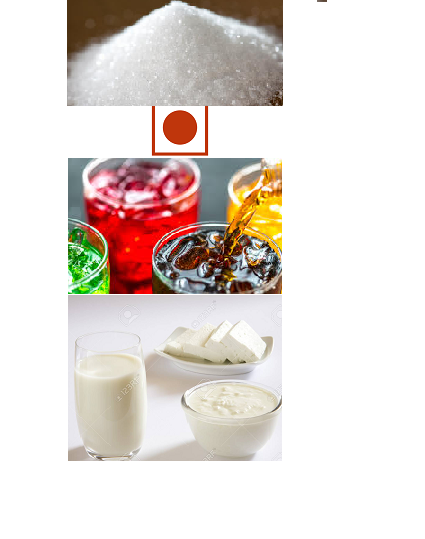
- Fermented foods
- Refined sugar
- Beverages with soda
- Animal products
- Milk and other dairy products
- such as paneer and yoghurt
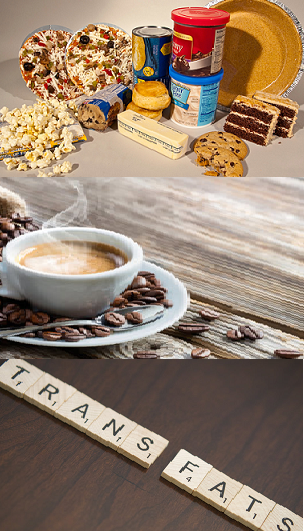
- Coffee
- Processed and packed foods
- Trans fats
- Mon-sodium Glutamate (MSG)
- Canned fruit juices with high sugar content
3. Opt for low sugar diet
Research has suggested a positive correlation between high glycemic index foods and low grade inflammation. High Glycemic Index Foods means foods that are digested and absorbed quickly and brings a sudden rise or spurt in blood sugar levels. Foods that are high in refined sugars and processed carbohydrates in general have high glycemic index (GI). Baked potatoes have a GI of 85, popcorns 72, white bread 70 and sugar has 68. This is especially true in diabetic patients where it is seen that a diet low in glycemic load, high in dietary fibre and low in fat along with lifestyle modifications has a shielding effect against general body inflammation and can reduce diabetes incidence in the long term by 50%14,15. Foods low in GI is digested slowly, causes a slower rise in blood sugar so they give a sustained energy. Examples of low GI foods are crushed peanuts (7), peanuts (14), sprouted beans (25) and apples (38).
Research has suggested a positive correlation between high glycemic index foods and low grade inflammation. High Glycemic Index Foods means foods that are digested and absorbed quickly and brings a sudden rise or spurt in blood sugar levels. Foods that are high in refined sugars and processed carbohydrates in general have high glycemic index (GI). Baked potatoes have a GI of 85, popcorns 72, white bread 70 and sugar has 68. This is especially true in diabetic patients where it is seen that a diet low in glycemic load, high in dietary fibre and low in fat along with lifestyle modifications has a shielding effect against general body inflammation and can reduce diabetes incidence in the long term by 50%14,15. Foods low in GI is digested slowly, causes a slower rise in blood sugar so they give a sustained energy. Examples of low GI foods are crushed peanuts (7), peanuts (14), sprouted beans (25) and apples (38).
4. Eat more fruits and vegetables in your diet
Fruits and vegetables are rich in flavonoids, fiber and anti-oxidants that boost our health by reducing the inflammation and oxidative stress. Flavonoids have a protective effect against many diseases such as diabetes, heart disease, and other low grade inflammatory states. Fruits rich in flavonoids are apple, pear, melon, black grapes, citrus fruits, berries, peaches, plums, pomegranate, oranges and dried fruits. Vegetables rich in flavonoids are green leafy vegetables, cabbage, broccoli, peppers, carrots and peas. Daily recommended intake is minimum 2 cups each of chopped fruits and vegetables.
5. Substitute a portion of table salt with rock salt in your diet
We all know how damaging table salt is for our health. It has been found that an average Indian takes about 10g of salt in a day which is double the recommended daily salt intake (5 gms or 1 tsp according to WHO). We can save ourselves a lot from that damage by partially replacing table salt with rock salt (sendha namak) in our diet. We cannot use sendha namak solely in our diets because it lacks iodine, an important mineral to maintain the growth hormones and thyroid gland activity. The trick is to balance the two salts in your diet. For example, if you are adding table salt in curry (sabzi), use rock salt (sendha namak) in dal. If you are eating table salt containing mixture/snacks with tea, then add sendha namak in the wheat flour (atta) that you will knead. Apart from that remember to follow the ‘no added salt’ rule in your diet.
6. Drink plenty of water daily
Water is a natural detoxifier and it helps in flushing out toxins from our body. Secondly, keeping cells hydrated is critical in proper functioning of body system. It contains essential trace elements (such as chromium, cobalt, copper, magnesium, manganese, molybdenum, tin and zinc) and is slightly alkaline.
7. Go for alkaline diet
The modern day (acid forming) diets are rich in saturated fats, sugar, sodium and chloride and they lack in fiber, potassium and magnesium. Such a diet results in acidosis in body. The harmful effects of acidosis are high blood pressure in men and osteoporosis (weakening of bones) in women. An alkaline diet means limiting the protein intake and increasing fruits and vegetables in the diet. When food is metabolized, most proteins produce acid and most fruits and vegetables produce alkali (bicarbonates which helps in neutralizing the acid). The biggest advantage with an alkaline diet is that it increases the potassium and decreases the sodium load i.e. it improves the K/Na ratio. Ideally the K/Na ratio should be 10:1 but due to modern day eating habits and altered soil conditions, the ratio is reversed to 1:3. An alkaline diet improves bone health, increases muscle mass and reduces diseases resulting from inflammation such as high blood pressure, heart disease and strokes etc.
Remember that not all fruits and vegetables are alkaline in nature. For example, it is the potassium content in the food that decides their alkalizing activity. So, spinach (palak) and beetroot are not so alkalizing in fact they increase the acid load because of high oxalic acid in them.
8. Go vegetarian
Research has shown that exposure to animal foods could result in pro-inflammatory intestinal environment. In general, vegetarian diet is rich in fiber and micronutrients that reduces oxidative stress and lessens the frequency of obesity, high blood pressure, diabetes and heart disease16.
Summary
In a nutshell, an ideal anti-inflammatory diet should consist of whole grains, nuts, berries and low-fat dairy products in breakfast. 1-2 cups of fruits can be taken as in-between-meals snacks. For lunch and dinner wholegrains, legumes and non-starchy & colorful vegetables rich in flavonoids and fiber should be preferred. For cooking, food should be cooked in olive/mustard oil/flaxseed oil/sesame oil with omega 3 fatty acids. Mustard oil is a very healthy cooking oil with high PUFA (good fatty acids that protect our heart) content. Also it remains stable when subjected to high temperatures. Avoid refined oils and prefer using cold pressed or extra virgin oils. Ghee and coconut oil are the most stable and therefore ideal for deep frying.
References
- Punchard NA, Whelan CJ, Adcock I. The Journal of Inflammation. J Inflamm (Lond). 2004;1(1):1. Published 2004 Sep 27. doi:10.1186/1476-9255-1-1. [Pubmed]
- Born J, Lange T, Hansen K, Mölle M, Fehm HL. Effects of sleep and circadian rhythm on human circulating immune cells. J Immunol. 1997 May 1; 158(9):4454-64.[Pubmed]
- Mullington JM, Simpson NS, Meier-Ewert HK, Haack M. Sleep loss and inflammation. Best Pract Res Clin Endocrinol Metab. 2010;24(5):775-84.[Pubmed]
- Meier-Ewert HK, Ridker PM, Rifai N, Regan MM, Price NJ, Dinges DF, Mullington JM. Effect of sleep loss on C-reactive protein, an inflammatory marker of cardiovascular risk. J Am Coll Cardiol. 2004 Feb 18; 43(4):678-83.
- Liu YZ, Wang YX, Jiang CL. Inflammation: The Common Pathway of Stress-Related Diseases. Front Hum Neurosci. 2017;11:316.
- Anand P., Kunnumakkara AB, Newman RA, Aggarwal BB. Bioavailability of Curcumin:Problems and promises. Mol Pharm.2007 Nov-Dec;4(6):807-18[Pubmed]
- Daily JW, Yang M, Park S. Efficacy of Turmeric Extracts and Curcumin for Alleviating the Symptoms of Joint Arthritis: A Systematic Review and Meta-Analysis of Randomized Clinical Trials. J Med Food. 2016;19(8):717-29.
- Chigoziri E. and Ekefan EJ. Seed borne fungi of Chilli Pepper (Capsicum frutescens) from pepper producing areas of Benue State, Nigeria. Agric. Biol. J. N. Am.2013; 4(4): 370-374
- Knekt P, Kumpulainen J, Järvinen R, Rissanen H, Heliövaara M, Reunanen A, Hakulinen T, Aromaa Flavonoid intake and risk of chronic diseases. AAm J Clin Nutr. 2002 Sep; 76(3):560-8.[Pubmed]
- Sun J, Chu Y, Wu X, Liu RH. Antioxidant and antiproliferative activities of common fruits. J Agric Food Chem. 2002;50:7449–7454. doi: 10.1021/jf0207530. [Pubmed]
- Juergens UR, Dethlefsen U, Steinkamp G, Gillissen A,Repges R, Vetter H. Anti-inflammatory activity of 1,8-cineol (eucalyptol) in bronchial asthma: a double-blind placebo-controlled trial. Respir Med 2003; 97: 250-256.[Pubmed]
- Tuan G., Wahlqvist m.L., He G., Yang M. and Li D. Natural products and anti-inflammatory activity. Asia Pac J Clin Nutr 2006;15 (2): 143-152. [Pubmed]
- Calder PC, Ahluwalia N, Albers R, et al. A Consideration of Biomarkers to be Used for Evaluation of Inflammation in Human Nutritional Studies. British Journal of Nutrition. 2013;109(S1):S1-S34. doi:10.1017/S0007114512005119
- Den Boer AT, Herraets I.J., Stegen J., et al. Prevention of the metabolic syndrome in IGT subjects in a lifestyle intervention: results from the SLIM study. Nutr Metab Cardiovasc Dis. 2013; 23, 1147–1153.
- Kallio P, Kolehmainen M, Laaksonen DE, et al. Dietary carbohydrate modification induces alterations in gene expression in abdominal subcutaneous adipose tissue in persons with the metabolic syndrome: the FUNGENUT Study. Am J Clin Nutr. 2007;85, 1417–1427.
- Franco-de-Moraes AC, de Almeida-Pititto B, da Rocha Fernandes G, Gomes EP, da Costa Pereira A, Ferreira SRG. Worse inflammatory profile in omnivores than in vegetarians associates with the gut microbiota composition. Diabetol Metab Syndr. 2017;9:62. Published 2017 Aug 15. doi:10.1186/s13098-017-0261-x.[Pubmed]

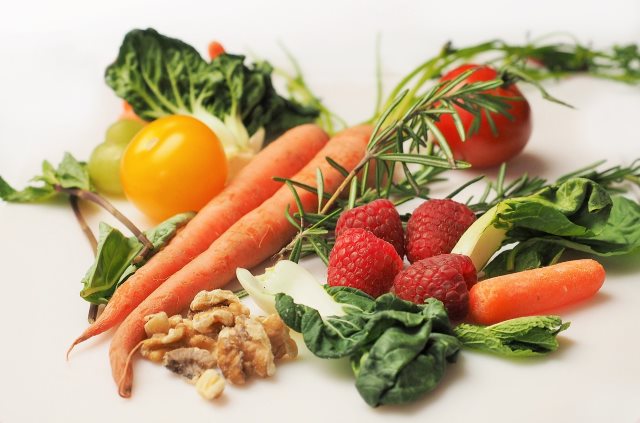
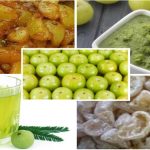
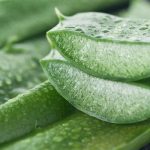

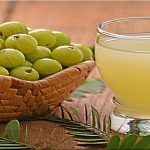
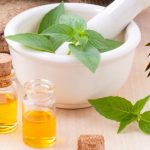
Very informative. Thanks a tonne.
Thanks Nitin… I am glad you found it useful.
Very informative. Thank you!
Thanks Nisha! Hope you enjoyed reading.
Very informative and useful.
Many thanks for your valuable comment..Hope this helps you to include more anti-inflammatory foods in your diet.
Some truly choice articles on this web site, saved to my bookmarks.
@oprolevorter..Thankyou so much!